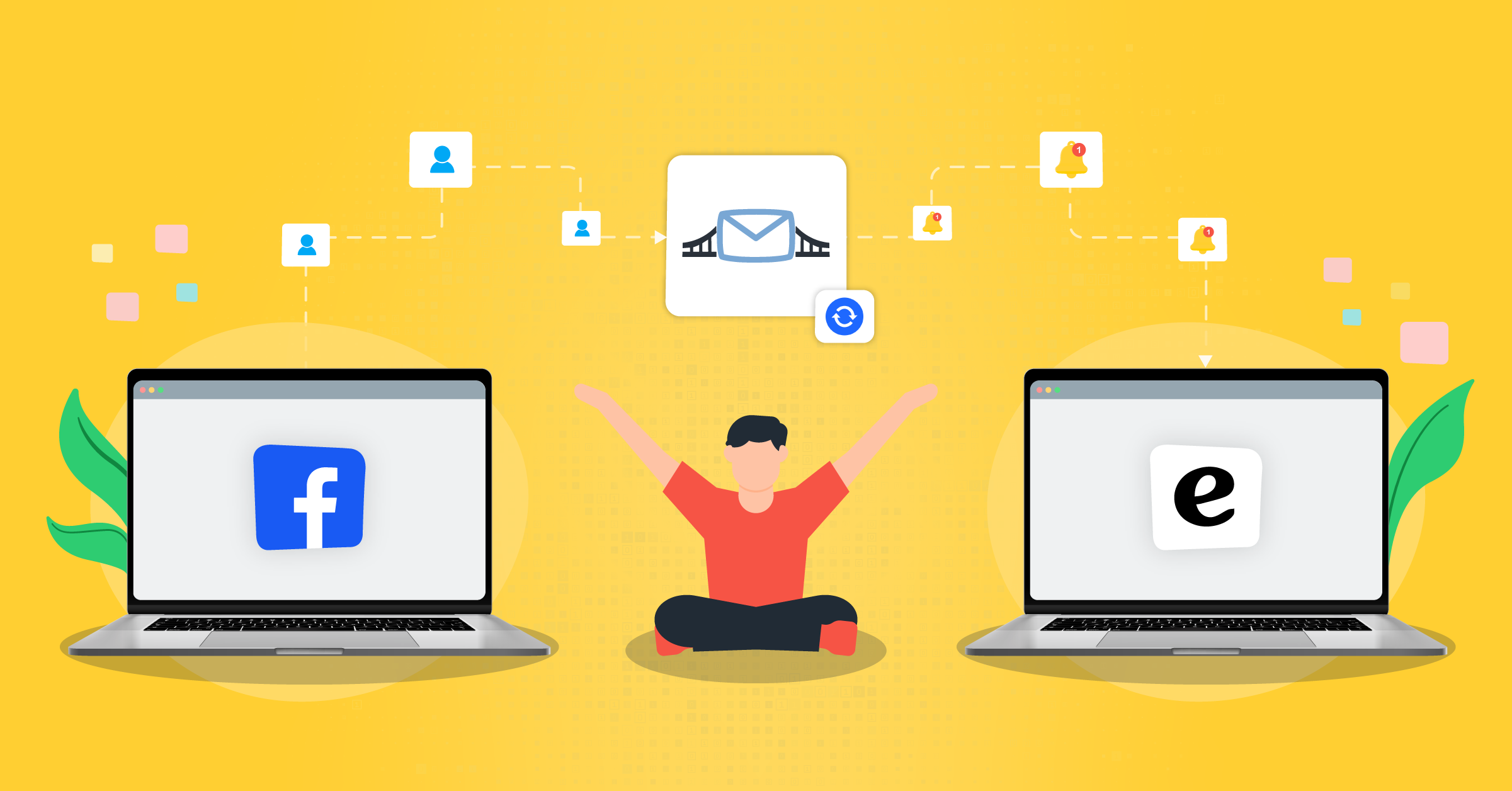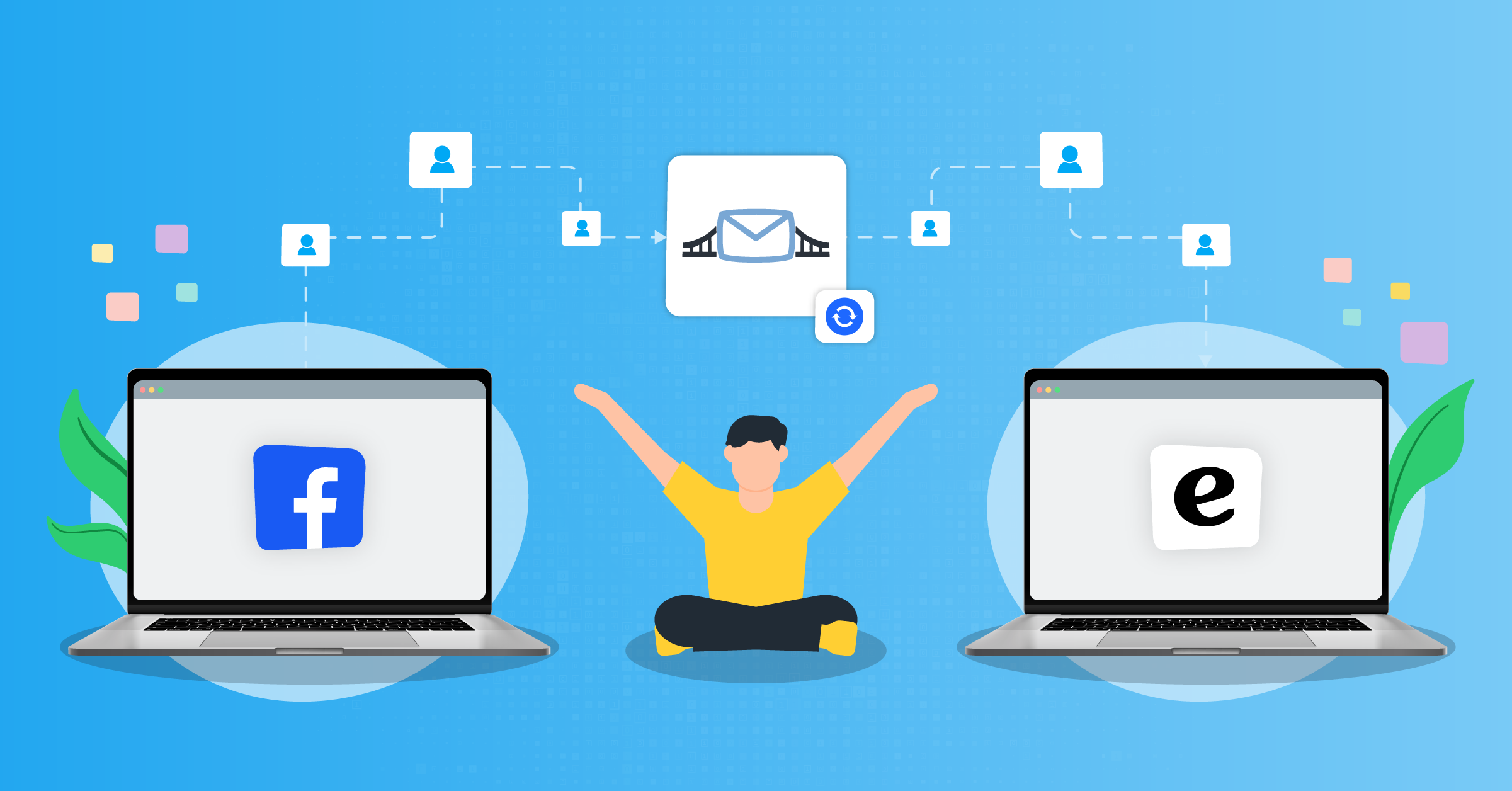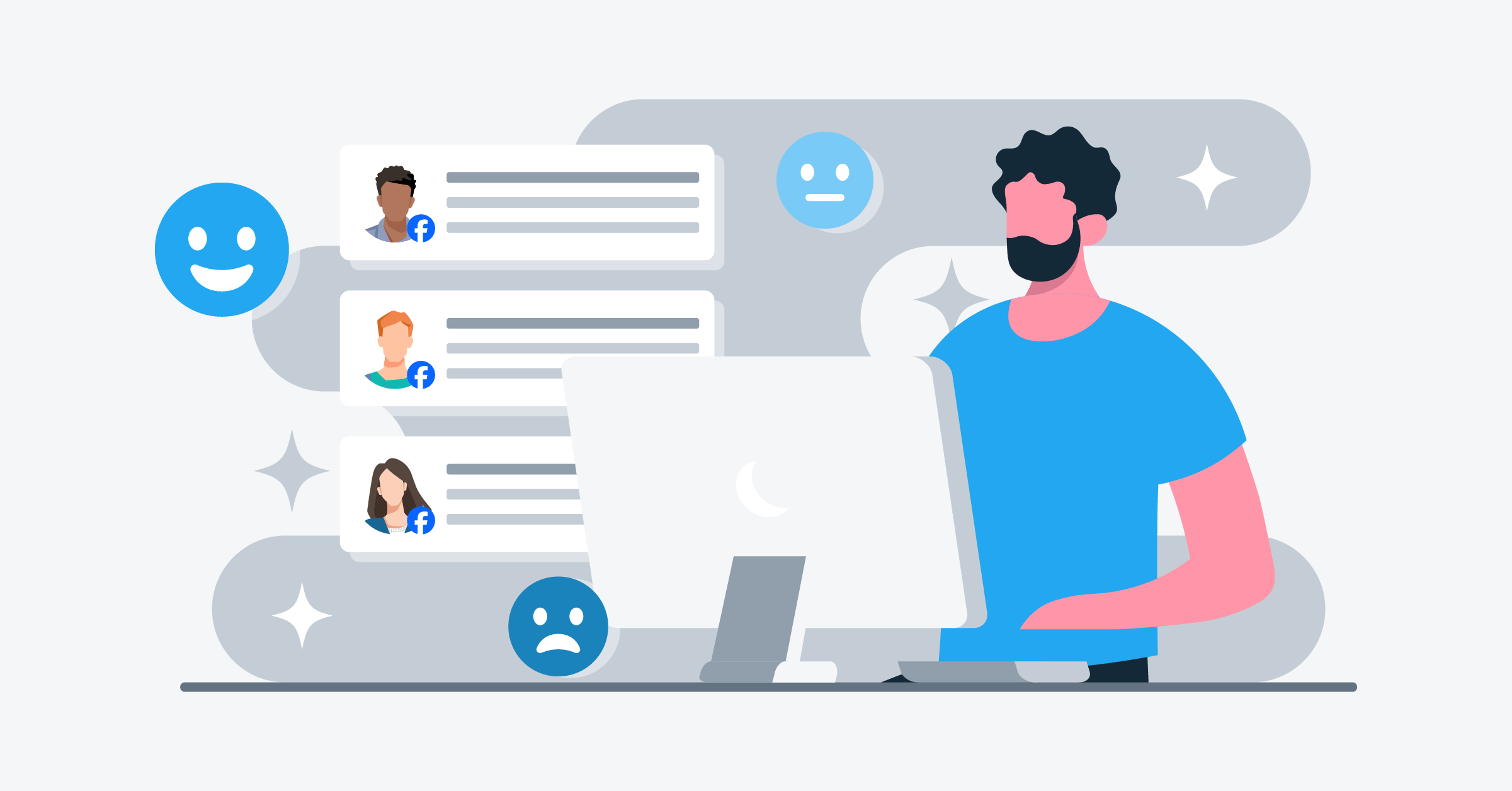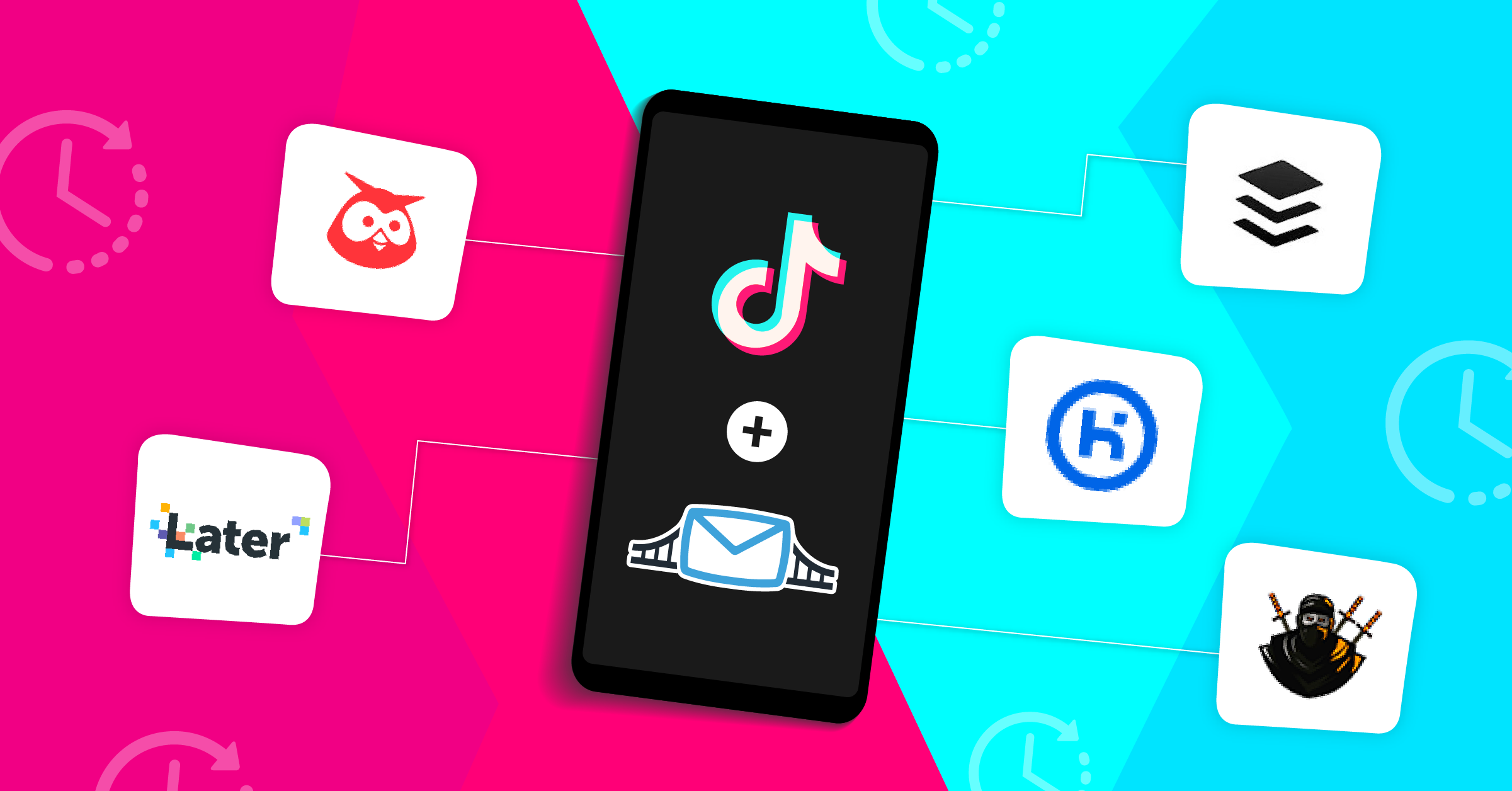
Facebook ads can reach millions of people, and quickly. However, running an ad campaign on Facebook takes more than just knowing how its advertising features work. There’s your marketing strategy, how to best use each tool, your ad copy and creatives, and more. One important aspect is also your ad budget.
You might be wondering, how much should I spend on Facebook lead generation ads? Or, how can you best manage Facebook ad spending? Many factors should be considered before answering these questions.
Generally, the right starting budget for Facebook ads should be based on how much it costs to sell your products, how much risk your business can handle, and your total budget for advertising.
In this article, we’ll explain how your budget affects the setup of your Facebook ad campaign. In addition, we’ll talk about strategies and integrations that can help you optimize your Facebook ad spending and potentially increase your ROAS, such as:
Why should you have a Facebook ad spending strategy?
Are Facebook ads really worth the hype? And is it worth paying for them?
The money you plan to spend on advertisement is an investment that goes into building up your business. That’s why your marketing objectives should be aligned with your business goals as well as the industry you operate in. And to do that, you’ll need a strategy that also considers your Facebook ad spending.
It’s best to start your strategy building before starting your full campaign. Then, decide how much money you want to spend on your ads. The amount you choose to spend will set the objectives for your campaign and determine how many ads and ad sets you can create.
How much do small businesses spend on Facebook ads
The amount you spend depends on what works for your specific business. You can adjust the budget as you start seeing results from your campaigns. The key is to start small, test, and scale up when it makes sense for your business.
Let’s take a look at how much small businesses spend on Facebook ads, and how you can apply that to your own business.
Always start small
Small businesses often begin by spending as little as $1 a day on Facebook ads. This is the minimum you can spend, and it’s a great way to test the waters without a big commitment. This strategy is often used to boost posts to see what works before increasing the budget.
Follow the basic guidelines
A rule of thumb is to spend about $1 for every 100 visitors to your website each month. So, if you get around 5,000 visitors, you might start with a budget of $50 a month. This helps you use Facebook as an amplifier for what’s already working in your business. This could be your email list or website traffic.
Gradually increase your budget
If your initial budget is working and bringing in results, you can increase it one bit at a time. Some small businesses find that spending $100 to $500 a month can deliver steady results, depending on their audience and goals.
Keep your spending in check
It’s also important to ‘ration’ your budget. About one-third of your Facebook ad budget should go toward conversion remarketing. This is while the rest should focus on engagement (reaching people who are already familiar with your business).
How much should I spend on Facebook ads?
How much you spend on your Facebook ads to meet your goals will affect your overall campaign structure. Nevertheless, your budget should align with your advertising objectives.
Let’s explore some strategies for budgeting based on different goals.
Creating entry-level engagement
You might be new to Facebook ads. Or, you might have a limited budget. If that’s the case, start small. Facebook lets you run your ads for as little as $1 per day to let you gain exposure while understanding how Facebook ads work.
This minimal budget can still generate worthwhile results, especially if you’re targeting a specific audience. The average cost per thousand impressions (CPM) on Facebook was $10.61 in January 2024.
This shows that advertisers are typically charged between $10 and $11 for every 1,000 ad views, regardless of the number of clicks it gets. A relatively low price and an excellent way to test the waters.
Keeping lead generation at the center
So, how much should I spend on Facebook lead generation ads, you ask? The costs can change depending on the ad’s format and objective. However, you should spend enough to meet your lead generation targets while staying within budget.
For example, consider your goal is to generate 100 leads per month and the average cost per lead is $2 (based on historical data or industry benchmarks). You’ll set a monthly budget of $200 to meet this goal. This approach keeps your spending in line with your lead generation objectives and helps maximize the return on investment.
Learn more about building a successful lead generation campaign here.
Boosting your conversions
You might have captured a lot of leads but much lower conversion rates. That’s when your objective should focus on driving more conversions, such as purchases or sign-ups.
If you’ve already moved past the initial learning phase of Facebook’s algorithms, it’s time to increase your spend.
For instance, you might target achieving 50 conversions per week. If your average cost per conversion is $5, this would require a weekly budget of $250, which is about $1,000 per month.
This level of spending helps your ads reach a sufficiently large audience to achieve your conversion goals. On the other hand, it’s enough budget to allow Facebook’s algorithm to optimize your ad delivery in an optimal manner.
Keeping your campaign optimized
Establishing a baseline spending and seeing some results is only the beginning. Next comes refining your strategies to decrease your campaign’s costs and increase its effectiveness.
This could be experimenting with your ad creatives, tweaking your targeting parameters, or testing different ad formats. The goal is to tune your campaign in a way that helps you achieve a lower cost per acquisition (CPA) and higher overall return on investment.
Each of these strategies starts with a small risk and investment. But as your needs grow, you’ll want to increase your spending. Bigger ad spending usually directly affects specific business outcomes.
For more tips, check out this guide on how to increase your Facebook ad ROAS.
About Meta’s prices for ads
Meta helps advertisers control their spending by setting a daily or total (lifetime) budget for ads run on platforms like Facebook, Messenger, Instagram, or the Meta Audience Network. Ad costs are based on the number of clicks or impressions received. But this number shouldn’t exceed the set budget.
Before deciding how much should I spend on a Facebook ad, here are the differences between the ad budget and the amount spent:
- Budget: The maximum amount an advertiser is willing to allocate for an ad.
- Amount Spent: The actual expenditure, which may be less than the set budget depending on ad performance.
Payment methods for Meta ads
Advertisers add a payment method when creating ads. The payment settings can be one of the following:
1. Automatic billing: Charges apply upon reaching a spending threshold or on a monthly bill date
2. Prepaid funds: These costs are deducted from a preloaded amount. Charges are detailed in the Billing section of the Meta Ads Manager. Advertisers can track and manage their ad spend.
How do I increase my spending limit on Facebook ads
This spending limit helps you control how much you spend across all your campaigns, and you can choose to reset it manually or automatically, like at the end of the month. Here are simple steps on how to increase your spending limit on Facebook ads.
- Go to Meta Ads Manager and click on Payment Settings. You might need to enter your password again.
- Scroll to the “Account Spending Limit” section.
- Click on the Change button.
- Enter a new spending limit. This is the new amount you’re okay with spending on all your ads combined.
- Click Save, then Done to confirm.
Your new spending limit will be updated in about 15 minutes, and your ads will start running again if they were paused. Any money you’ve already spent counts towards your new limit.
If you get an error message about making too many changes, wait about an hour and try again. And if your account is set up with prepaid funds, you can’t change the spending limit.
Optimizing your Facebook ad spend with LeadsBridge
Marketing automation tools like LeadsBridge let you streamline the key parts of Facebook ads and your marketing strategies. This can greatly improve the Return on Ad Spend (ROAS).
Let’s go through some of the main advantages of using these integrations:
Running immediate lead follow-ups
Connecting Facebook with your CRM or autoresponder app can significantly change the outcome of your campaigns. When a lead responds to your Facebook lead ads campaign, these integrations can send their info to the right segment so it can almost immediately trigger an email or SMS response.
Immediate follow-up keeps your leads engaged while their interest is at its peak. But that’s not all. Automated customer management systems can personalize communication based on the information provided by the lead.
These factors combined help increase your ad’s relevance as well as the likelihood of conversions.
Explore these top Facebook lead ads CRM integrations for your marketing campaigns.
Streamlining your audience targeting
Syncing data between your Facebook and your CRM system is a robust setup. It can ensure that the audience lists stay always updated with the most recent interactions and engagement data.

This allows for dynamic segmentation, a process where audiences are automatically updated based on their behaviors (aka CRM enrichment). You can then use this data to target users with ads that are more relevant to their recent interactions.
Besides segmenting your audiences, this can specifically increase your audience targeting precision. How can you do this? By letting Facebook’s algorithm know exactly what you want to prioritize with your campaign using conversion lead optimization goal integrations.

Remember, to use conversion optimization goal ads, you’ll need to set up your Facebook Conversions API. This helps collect performance data and refine targeting.
Precise conversion tracking
At times, it becomes a challenge to track the customer journey across different platforms. LeadsBridge helps you fill this gap.
If you have your Facebook Pixel set up already, you can track how online ads contribute to offline sales. This is a cookieless tracking method that can help you measure your ROAS more accurately.
Here’s how to install a Facebook Pixel.
Connecting your databases to Facebook conversion API for CRM integrations can also help you understand which ads are driving real sales. This tracking gives you golden insights that can be used to refine advertising strategies, targeting, and spending.
Takeaways
How much you should spend on a Facebook ad depends on many factors. How long you have been advertising, the nature of your ad’s content, the tools you are using to improve your targeting, and more. Even if you have mastered every aspect of your Facebook advertising, there’s still something you can do to improve them. You could say that Facebook ad spending optimization is a moving target that you need to keep up with.
However, there are tools that can help you with it.
Integrating LeadsBridge with a business’s marketing stack helps automate and perfect marketing efforts. This means having more efficient spending on the advertising budget, better customer experiences, and potentially, higher ROAS.






















